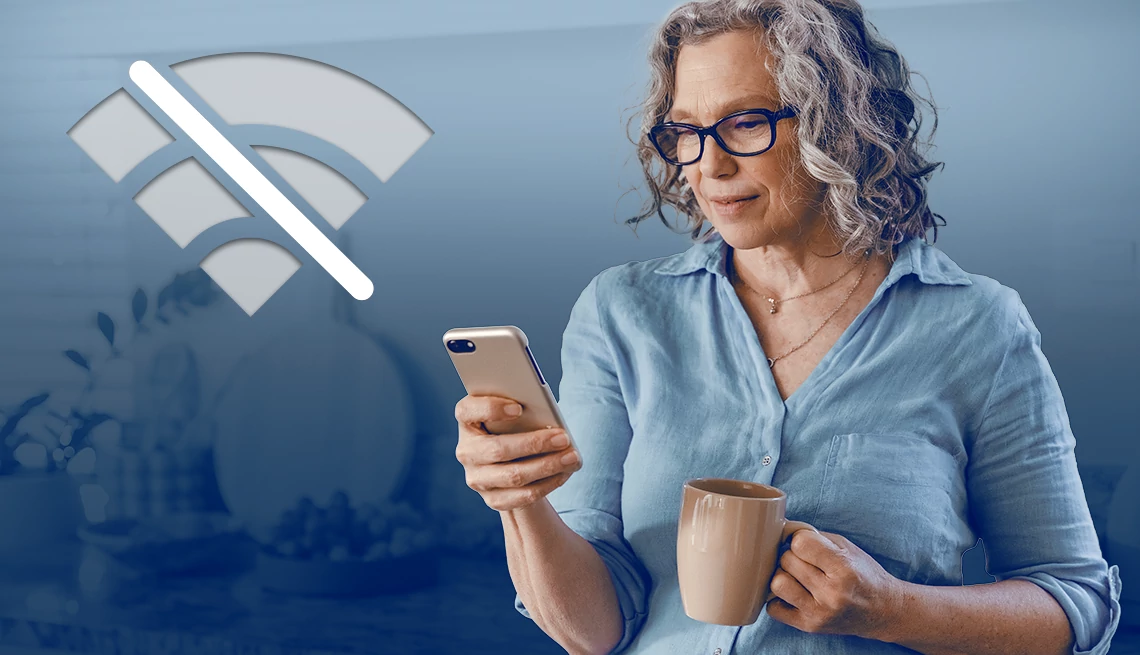AARP Hearing Center


In this story
Subsidies end • Aid needed • Extension awaits action • Continue your service • Older adults left out • Training • Rural expansion • Ways to learn
Now that time has run out for the nearly 23.3 million households in a nationwide program to lower the cost of high-speed internet access, some don’t know how they will foot the bill themselves.
Without congressional action, the $14.2 billion Affordable Connectivity Program (ACP) ran out of money around May 14, though some providers did extend their less-expensive rates after that.
“It was a godsend for me because I had to cancel my internet service after I broke my leg,” says Thelma Hall, 62, of San Antonio. She broke her shinbone and knee in an April 2022 accident, lost her job and became isolated. “I had no income, but ACP came along just in time.”
The ACP and the Emergency Broadband Benefit Program (EBB) that preceded it grew from a little more than 1.5 million low-income households in May 2021 to helping more than 1 of every 6 U.S. households in February 2024. The Federal Communications Commission (FCC) was forced to shut down new enrollments Feb. 7 because no money was set aside to continue the program.
Surveys show support, need for the aid
Nearly 4 in 5 older adults say they want Congress to continue to appropriate money for the program, according to an AARP Research survey conducted Jan. 18 to 23 among 1,035 U.S. adults 50 and older. About the same number support the program in general.
An October survey from the Washington-based Benenson Strategy Group, in partnership with internet provider Comcast, showed that almost two-thirds of ACP participants of all ages feared losing their jobs or their household’s primary source of income if their eligibility ended.
The ACP provided $30-a-month payments to broadband companies for households that earn up to 200 percent of federal poverty guidelines. Internet service on tribal lands is subsidized at $75 per household because of the high cost of serving remote areas. In 2024, a person who lives alone qualified for ACP with a gross income of $30,120 or less in the continental United States.
“I think a lot of people fell through the cracks before the ACP program,” Evelyn Lewey, 56, told the Portland (Maine) Press Herald. She is a member of the Passamaquoddy Tribe in Pleasant Point, Maine, who works to connect people in her community to the internet. “I’m afraid now they’re going to lose it, and we’re going to have so many setbacks.”
Bill to extend internet discount program awaits action
Congress members leave Friday for a Memorial Day week in their states without voting on any of a few bipartisan alternatives to extend the Affordable Connectivity Program and funnel $6 billion to $7 billion to keep the federal subsidies in place with little disruption.
“If they took [ACP] away, it would be like taking food out of my mouth,” Shirleen Alexander, 72, of Charlotte, North Carolina, said earlier this year as the FCC began to wind down the program. She lives on a fixed income, and the subsidy has offset some of the stress she feels about medical bills. “I need the service, and some of my senior citizen friends need it as well.”
Abner Schlabach, 80, has been making fewer drives over winding roads from his home in Barnard, Vermont, to Dartmouth Hitchcock Medical Center more than 30 miles away in Lebanon, New Hampshire. His ACP-subsidized high-speed internet has allowed him to see many of his doctors virtually through telemedicine appointments.




































































More From AARP
How to Find the Passwords You’ve Stored in Web Browsers
Learn steps for Chrome, Edge, Safari on desktop, mobileSave Some Money; It’s Safe to Get Rid of Your Landline
Old-fashioned telephone lines are becoming more rareAARP's Fast-Action Guide to Replacing Appliances
When your home essentials break and there's no time to lose, these shopping tips can help
Recommended for You